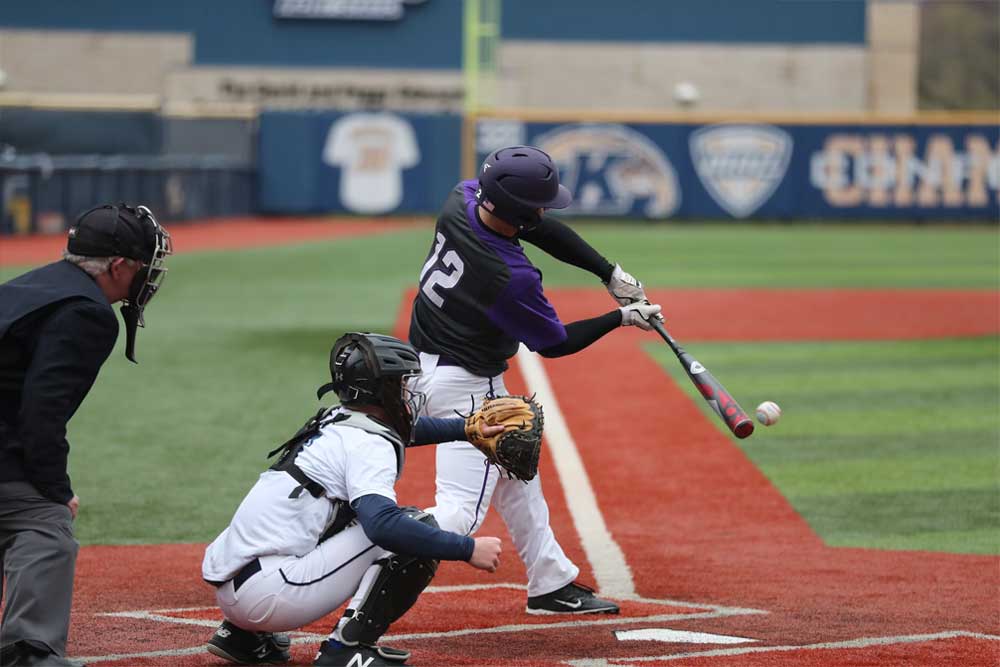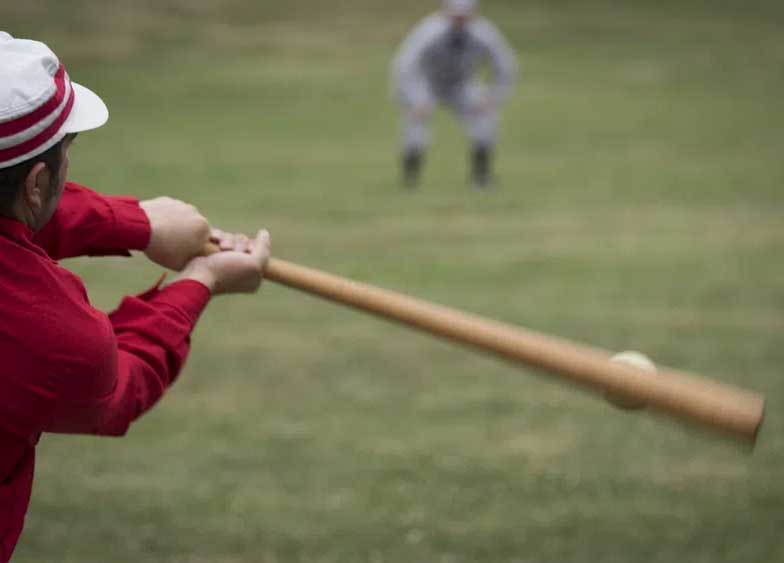The baseball swing is a paradox—it’s both simple and incredibly complex. While it’s relatively easy to teach the fundamentals of hitting a baseball, it takes years of dedication to refine your skills and cultivate a precise, swift, and efficient baseball swing.
Given the myriad of stances and setups in baseball, there are numerous approaches to hitting a baseball. However, once a hitter reaches the contact point with the ball, the distinctions fade away, and the universal principles and similarities emerge.
Every batter who steps into the batter’s box has a unique style for preparing to hit. Some stand close to the plate, others adopt an open stance, some maintain an upright posture, and a few crouch down low. Some incorporate a leg kick into their swing, while others refrain from striding at all. At first glance, it may seem that every hitter is entirely different, making it challenging to discern between customizable elements of their swing and fundamental absolutes.
The seven absolutes become apparent at the moment of contact. Regardless of how a hitter approaches the contact point in their swing, all exceptional hitters execute these same key principles.
If we were to compare hitters like Johnny Damon, known for his open stance and leg kick, to Albert Pujols, with a wide stance and minimal movement, and David Eckstein, who gets deep in his legs, chokes up, and stands close to the plate, they might appear drastically dissimilar initially. Yet, once you strip away the pre-pitch rituals, leg movements, and other distinctive features, you’ll discover striking similarities among them.

Let’s delve into the seven absolutes that define a baseball swing at the point of contact. While not all seven may be achieved on every swing, particularly when facing different pitches, it’s essential to remember that hitting is an art, and at times, relying on your natural athleticism may override perfect mechanics. Here are the seven absolutes:
Laser Focus on the Ball
Seeing the baseball precisely at its point of contact is a fundamental requirement. This may sound obvious, but it’s far from simple. Hitting a baseball effectively begins with the ability to track and see the ball clearly. For a more in-depth exploration of this crucial aspect, delve into “How to Be a Better Baseball Hitter – Enhancing Your Ball Tracking Skills.”
Perfect Hand Positioning
For a right-handed batter, envision taking away the bat at contact and observing their hand positioning. The right hand should be facing skyward, resembling someone ready to receive money, while the left hand should be facing the ground. This grip on the bat is the most powerful position possible during contact.
Target the Off-Middle Infield
A right-handed batter should direct their front foot toward the second baseman. This isn’t just about balance; it’s about harnessing the torque generated by your body to unleash it upon the baseball at contact.
Rock-Solid Front Side
This doesn’t necessarily mean having a rigid leg; a slight bend suffices. The key is to keep this leg firm, which prevents your body and hands from drifting forward and keeps them behind the baseball. A firm front side is crucial for maintaining bat speed and minimizing head movement.
The Triangle of Strength
Imagine forming a triangle by connecting lines from your head to both your feet. A triangle is an exceptionally stable geometric shape used in various applications. Being within this strong triangular framework is the most robust posture for your body. Moreover, it allows you to rotate on an axis with minimal head movement.
The Alignment Trio: Back Knee, Back Hip, and Head
Picture an imaginary pole passing through your back knee, back hip, and head, allowing you to rotate around it. This ensures you’re not leaning too far forward, which would result in power loss, or leaning too far back, leading to an erratic uphill swing.
Toe on the Back Foot
When you commit to your swing and initiate the force toward the baseball, your firm front side will abruptly halt your forward momentum. What remains is your back toe, either firmly planted or slightly raised off the ground.

Notably, the seventh principle can vary slightly depending on the hitter’s style. Some hitters, like A-Rod, Manny Ramirez, Pujols, and Frank Thomas, shift their weight and rotate, allowing their back toe to lift. Conversely, other hitters, like Teixeira and Kinsler, are back-foot hitters who rely on letting the ball come deep. They are also more inclined to pull the ball.
It’s important to distinguish this from the notion of “squashing the bug,” which results in premature rotation and can lead to pulling off the ball. The goal in hitting is to maintain the bat in the zone for as long as possible. Raising your back toe facilitates taking the swing entirely to the ball, promoting the synergy of weight shift and rotation—an ideal scenario. While this may appear to be a minor technical detail, it can significantly affect your swing’s consistency. Initiating the swing from your back toe kick-starts your weight shift by propelling your back hip toward the baseball, ensuring your back foot is in the correct position.
Upon close examination in slow motion during contact, many hitters appear to have their back toe lifted or slightly off the ground, thanks to the power generated from their leg drive. However, after contact, their foot movement may differ. While it may seem that most hitters don’t reach their back toe, slow-motion analysis reveals that they indeed do.
The seventh principle can be disregarded by extreme pull hitters who approach the plate closely and seek to pull the ball exclusively. In such cases, they might merely rotate without pivoting on their back foot. However, to hit successfully in this manner demands impeccable timing or a profound understanding of the technique. It can also expose vulnerabilities in your swing if not executed correctly.
Additionally, some hitters may choose not to pivot on their back foot, often dependent on the pitch type. This approach may help them employ their hands effectively, reach pitches well off the plate, or keep their body out of the way. Nevertheless, it’s worth noting that these hitters usually drive their back knee toward the ball, mirroring the same principle—they just don’t fully rotate their back side through the ball.
